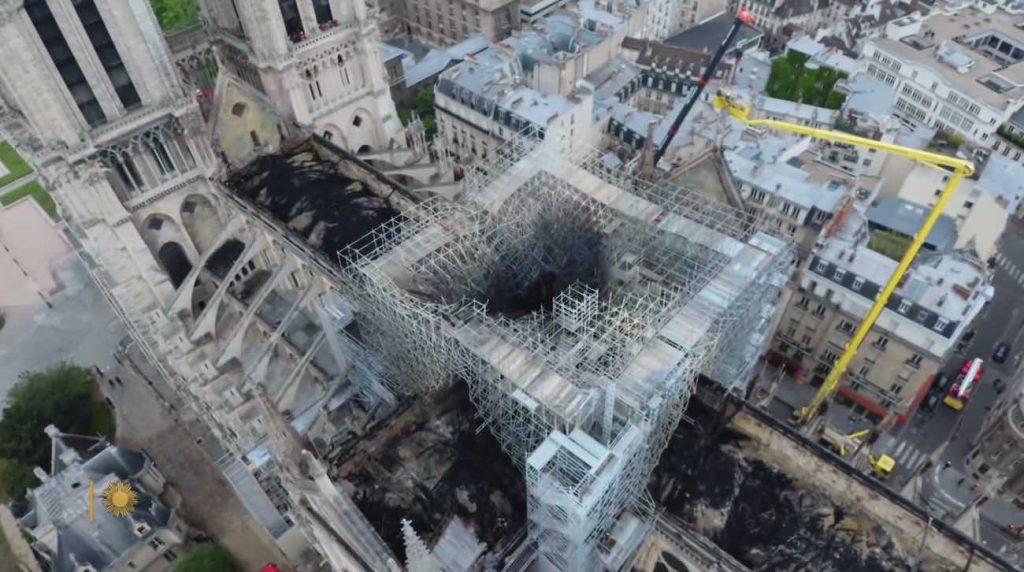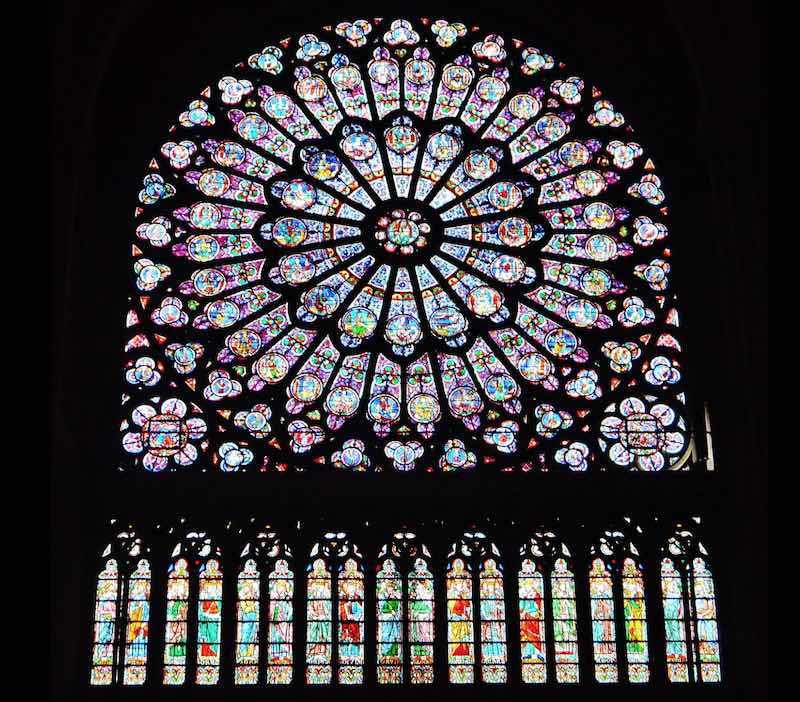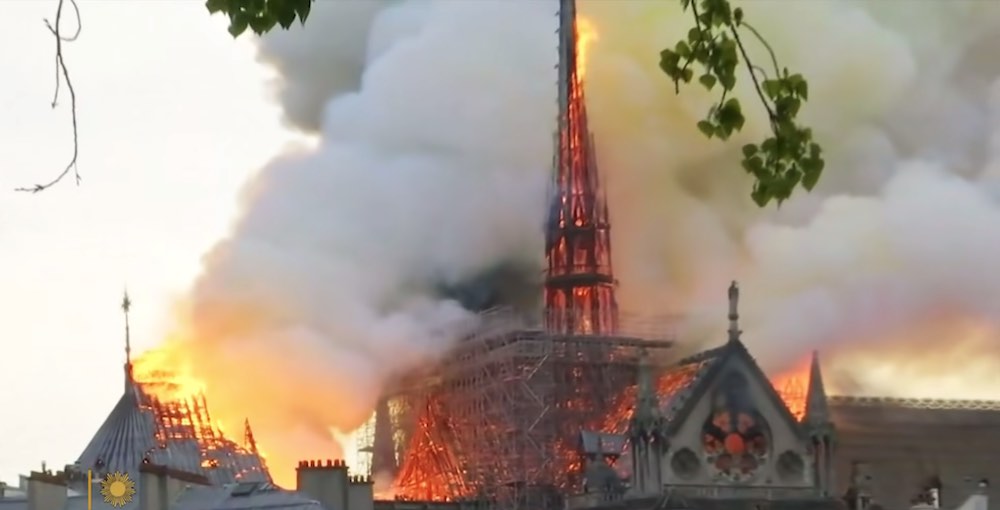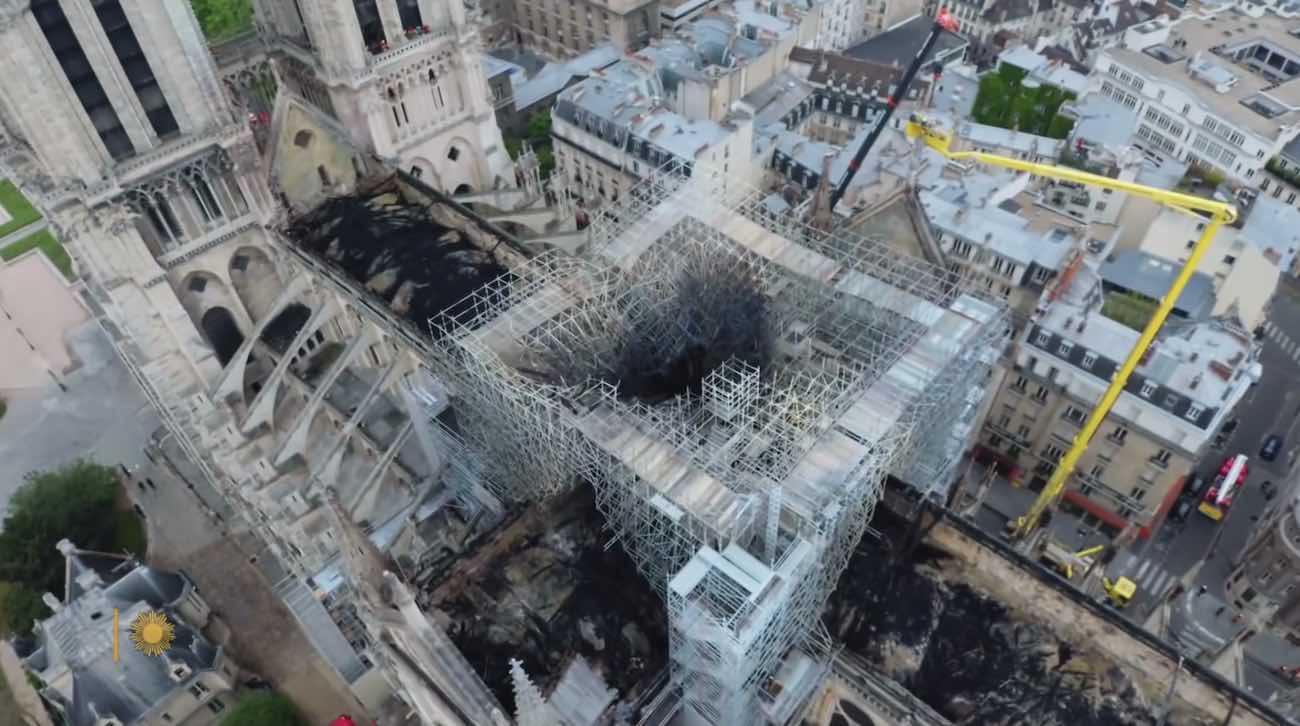
When France hosts the 2024 Olympics, the plan is for Notre-Dame Cathedral to be restored to its former glory in time for the event.
A team of 35 architects, masters in historical restoration, and international NGOs armed with a billion euro in donations from around the world—including 30 million from U.S donors—are busy helping the Parisian monument rise from the ashes.

It’s been three years since fires engulfed the famous cathedral, yet even as the flames rose that night, there were signs that utter destruction could be averted. The firemen trained their hoses with tact, avoiding the enormous stained glass windows Notre Dame is known for.
Furthermore, in the days after the 800-ton spire collapsed, it was discovered that something of a miracle had occurred. While the modern altar had been crushed, the iconic Virgin of Paris, a 14th-century stone statue, stood but several feet away entirely unharmed—albeit quite covered in dust.
Luckier still, the twelve copper apostles lining the staircase to the spire’s summit had been removed four days before the fire for maintenance. The Chapel of St. Ferdinand, apart from suffering an increase in humidity, was entirely spared.
LOOK: Trees Growing Out of Buildings Could Help Heal China’s Air Pollution Problem
All in all, the Cathedral lost its spire, vaults, and lead ceiling, the last being a particular danger as it poured molten lead all over the architecture, but the walls survived, the treasures and art survived, and the enormous façade survived, giving more than enough for restorationists to work with in a grand revival in time for the Olympics.
Ahead of its time

The Sunday before the fire, 3,000 people attended mass, but 10-12 million tourists visited the building every year.
MORE: Look at Eco-Friendly Rooftop Designs for Notre Dame Cathedral With Solar-Powered Glass Spire
When it was being built in the late 12th-to-early 13th century, Notre Dame was a real stunner, and brought many new styles to cathedral building, such as flying buttresses and pointed arches. The buttresses allowed for soaring windows and high walls. National Geographic reports that jealous Italian architects dubbed the style “Gothic,” which to be more specific means, “Visagothic”—in other words, “barbaric,” but that didn’t stop the style from spreading to Germany, Austria, Great Britain, and east as far as Ukraine.
The timber framework was clad in triangular oak trusses from ancient woodlands, the kind that barely exist anymore in France. A forestry expert named Philippe Gourmain manages forests all over the country, and Nat Geo reports that “by 11 p.m. he was on the phone with a friend at the National Forest Office, hatching a plan to collect the needed wood through donations.”
An NGO named Carpenters Without Borders are perfecting the method of constructing these trusses in the Medieval way—working with the heart of each tree in each creation. In September 2020, the non-profit reconstructed one of these trusses in front of the cathedral as a demonstration of what was to come.

In terms of the stone, the heat of the fire at 1,400°F (760°C) was enough to peel as much as four inches off some and turn it into powder.
In some of the wall stones, this caused them to crack, but experts are finding ways to repair these by injecting a paste of lime and other minerals. Those which are too damaged are up for replacement, and architects are looking to find the location of the quarries that birthed Notre Dame’s original stone, long since swallowed up by the city’s sprawl.
CHECK OUT IKEA Releases Free Design For Garden Sphere That Feeds a Neighborhood
Many stones have remained entirely unharmed, however they are fitted in walls that were revealed to be dangerously wobbly; perhaps vulnerable to toppling in just a 56-mph wind. To prevent a secondary calamity, engineers installed huge wooden support beams to hold the walls in place until a new roof is finished.
Even the lead roof will be replaced, and will join the timber roofbeams and spire with modern fire proofing and extinguishing equipment.
The night of the blaze, President Emmanuel Macron called Notre Dame “our history, our literature, our imagination,” and vowed to rebuild it before the 2024 Olympics, a goal which galvanized progress—setting an end date reminiscent of U.S. President John F. Kennedy’s 1961 pledge to put a man on the moon by the end of the decade.
And with a budget most restoration architects could only dream of having, the cathedral should reopen with a sparkling finish, with every new, old, and ancient square inch cleaned to a shine.
(WATCH the new video below from CBS Sunday Morning—and see all the photos at National Geographic… Editor’s Note: Viewers outside the U.S. can watch the CBS video here.)
Build Up Some Positivity By Sharing The Good Parisian News…




















